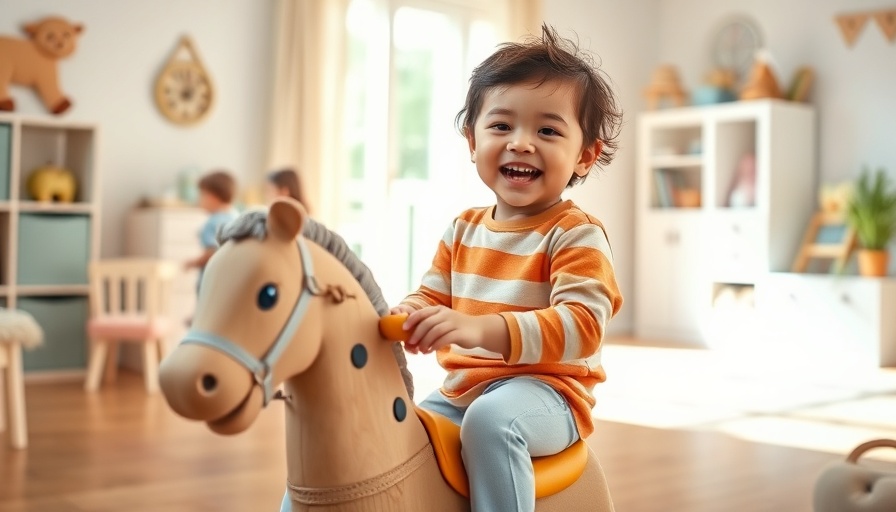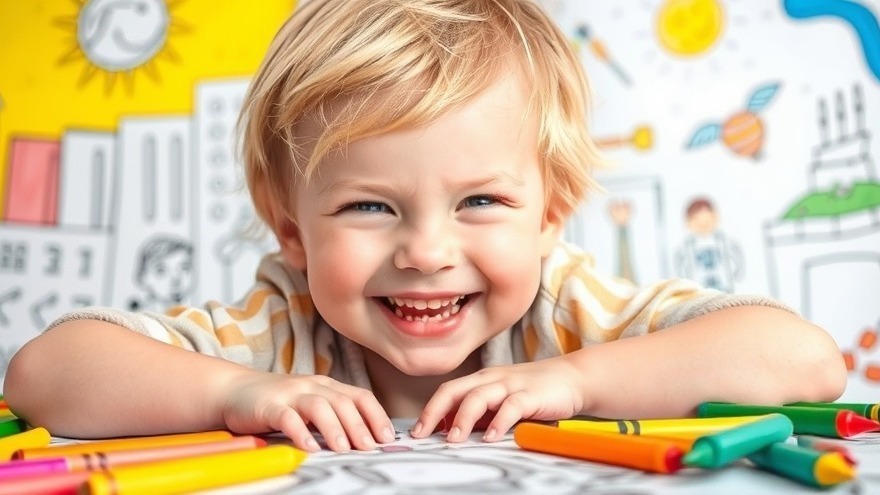
Creating a Space for Imagination and Growth
The playroom is much more than just a cluttered collection of toys—it serves as a vital hub for creativity, learning, and fun, making it an essential aspect of any family home. A well-thought-out playroom not only encourages imaginative play but also supports a child's emotional and cognitive development. Parents often feel overwhelmed by choices when it comes to toys and organization, but creating a playroom can be simplified by focusing on quality over quantity. This article will provide insights into how to set up a children's play area that inspires engagement, fosters creativity, and remains organized.
Why Quality Over Quantity Matters
In today's consumer-driven society, it’s easy to amass a large quantity of toys. Yet, research indicates that children benefit more from a few well-chosen items that stimulate various types of play. Focusing on quality toys can prevent clutter and encourage meaningful interactions. For instance, toys like building blocks or musical instruments facilitate imaginative play and learning simultaneously. Investing in fewer high-quality items can also result in a financial savings over time as families won't be constantly purchasing trendy toys that might only be used a few times.
Tip: Create Play Zones for Better Engagement
One effective way to ensure that a playroom caters to different moods and activities is by establishing designated play zones. Consider sections for imaginative role play, puzzles, reading nooks, and arts and crafts. This method allows children to move from one activity to another seamlessly, depending on their interests. A cozy corner, for instance, may house books and soft seating where children can retreat for quiet time, while another zone filled with art supplies encourages creative expression.
Storage Solutions That Encourage Independence
An organized playroom is crucial for maintaining cleanliness and encouraging children to develop good habits. Implementing open shelving, labeled bins, and baskets enables children to take charge of tidying up their play area. When children can easily access their toys and understand where to put them back, they are more likely to engage with their environment independently and confidently.
Engaging Toys for Diverse Age Groups
When selecting toys for a playroom, consider those that can adapt as children grow. Open-ended toys, such as unit blocks and magnetic tiles, cater to a range of ages and encourage creative expression. Children can use these versatile toys to construct buildings, vehicles, or even fantastical worlds. Reference Article 2 underscores the value of toys that support various types of play, emphasizing that such items not only enhance creativity but also promote problem-solving skills. These toys grow alongside your children’s interests, making them lasting investments.
Incorporating Educational and Musical Elements
Musical toys are a fantastic addition to any playroom, providing not just entertainment but also developmental benefits. Instruments like xylophones and drums can enhance cognitive skills, coordination, and creativity. According to Reference Article 1, introducing musical toys can create a stimulating environment where children can express themselves while learning about rhythm and sound. With the right selection of educational toys, parents can foster an engaging learning space that makes skills acquisition enjoyable.
Addressing Counterarguments on Toy Fads and Trends
Amidst the allure of trendy toys—often seen on social media—it can be easy to chase the latest must-haves, but this approach can lead to disillusionment and clutter. Many parents, as highlighted in Reference Article 2, have admitted to purchasing toys solely based on their popularity, only to find that their children lost interest shortly after. Instead, focusing on foundational toys that allow for various uses will encourage lasting engagement and creativity in play.
Understanding the Emotional Value of Playroom Design
A well-conceived playroom not only adds educational value but also enhances the emotional well-being of children. An inviting space filled with quality toys allows children to explore their interests and emotions freely. This emotional connection to their play environment fosters a sense of security and belonging. In turn, this influences their overall development and happiness.
In conclusion, setting up an ideal playroom involves thoughtful selection of toys and organization methods that cater to children's developmental needs while inspiring engaging play. By emphasizing quality over quantity, creating dedicated activity zones, and involving children in the maintenance of their space, parents can foster creativity and joy in their playrooms for years to come.
 Add Row
Add Row  Add
Add 




 Add Row
Add Row 

 Add
Add
Write A Comment